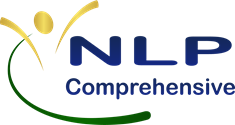The Seed and It’s Environment
by Jamie K. Reaser
“Though I do not believe that a plant will spring up where no seed has been, I have great faith in a seed. Convince me that you have a seed there, and I am prepared to expect wonders.” —Henry D. Thoreau
The growth from seed to tree is indeed wondrous. The journey can be fast or slow.
The pathway can be direct – trunk of straight spine – or circuitous – twisted, knotted wood. The outcome is determined largely by the conditions in which the seed finds itself.
How nurturing is the environment in which you set your seeds? As a trainer, do you focus more on what seed to put in place, than where and when to place the seed?
Robert Dilts delineates six “Neuro-Logical Levels” of learning (from bottom to top): the environment (where and when), behavior (what), capabilities (how), beliefs/values (why), identity (who), and spirit (for whom or for what). It is the environment that shapes the learning process – it can either interfere with or enhance growth. Where and when a seed is set, it is a trainer’s mission and challenge to maximize opportunities for and minimize constraints on learning.
The Optimal Growth Environment
Here I outline five elements that I consider a necessary part of the effective learning (growth) environment. These elements are non-exclusive, they are influenced by and influence each other, much like water, energy, and nutrients cycle through an ecosystem. Under each element, I provide a series of questions for a trainer to evaluate when planning and managing the learning environment. You’ll want to consider these questions in the context of the unique needs of each training program, especially the various “traditions” of the participating cultures and disciplines.
Space and Community: Habitat
- How will the overall space and seating arrangement enable participants to perceive themselves as being part of the class community – to forge connection among the participants and between the participants and training staff?
- How can the space be managed to enable participants and trainers to move comfortably and thus readily interact with each other?
Grounding: Soil
- How will the learning environment meet the physical and emotional needs of the participants – such as: toilets, food, sleeping facilities, recreational opportunities, quiet space for personal reflection or concentration, phone, and mail, as well as security for self and personal belongings?
- How will the learning environment enable participants to express their individual identities?
- How will you keep the learning environment free from distractions – such as clutter and extraneous noise?
Energy: Water
- How will you allocate time for training and breaks so as to keep participants in an energized, resourceful state?
- How will you encourage participants to eat healthy refreshments/meals, drink lots of water, and exercise during the training period?
- How will you manage the training room to provide sufficient natural lighting, comfortable temperatures (65-68oF/19-20oC), and well ventilated air flow?
Information: Nutrients
- How will you ensure that the participants can see and hear the trainers and each other adequately and that trainers have a variety of media (visual and auditory) through which to communicate?
- How will you inform participants of specific directives and opportunities?
- By what means will participants and trainers be able to offer feedback to each other and how will you encourage this exchange?
Motivation: Light
- How can you provide explicit and subliminal messages of encouragement and support throughout the learning environment?
- How can you celebrate each participant and empower them to maximize their contributions to the training program?
- As you consider the nurturing environment in which you will set your next seeds, imagine how your choices will contribute to the greening and blossoming of the human landscape. Be prepared to expect wonders.
Recommended Reading
Collins, T. K. 1996. The western guide to Feng Shui. Hay House, Inc., Carlsbad, California.
Dilts, R. B. and T. A. Epstein. 1995. Dynamic learning. Meta Publications, Capitola, California.
Doyle, M. and D. Straus. 1976. The new interactive method: how to make meetings work. Jove Books, New York, New York.
O’Connor, J. and J. Seymour. 1994. Training with NLP. Thorsons, San Francisco, California.
Jamie K. Reaser, PhD is an environmental sustainability and communications consultant. See: www.jamiekreaserconsulting.blogspot.com. She can be reached at ecos@nelsoncable.com.
Reprinted with permission of the American Society for Training and Development, Alexandria, Virginia. Spring 2000.
